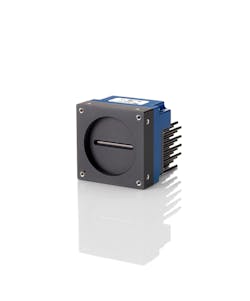Teledyne’s New High-Resolution Multispectral Line Scan Camera Extends Defect Detection Beyond the Surface
Teledyne DALSA, a Teledyne Technologies [NYSE:TDY] company, is pleased to announce the release of its multispectral Camera Link HS (CLHS) line scan camera—a new model of the award-winning Linea product line. This latest high resolution line scan camera provides spectrally independent RGB and NIR outputs making it uniquely capable of handling some of the most challenging inspection applications by detecting defects both on and under the surface of a wide variety of materials, components, and products.
“The Linea ML 8k multispectral camera offers versatile capabilities to meet the increasingly demanding requirements of a number of today’s challenging inspection applications, like banknotes, passports, and other high security print,” said Xing-Fei He, Senior Product Manager at Teledyne DALSA. “In addition, we have been able to deliver spectrally independent outputs of the RGB and NIR channels which enables accurate defect detection both on and under the surface of products like semiconductor wafers and printed circuit boards (PCBs) in a single scan, greatly simplifying vision system designs.”
The Linea ML 8k multispectral camera uses Teledyne DALSA’s latest CMOS 8k quad linear sensor with a 5x5 μm pixel size and delivers a maximum line rate of 70 kHz x 4 using CLHS fibreoptic interface. The camera also has built-in SFP+ transceivers that convert electrical signals to optical signals and connects directly to fibreoptic cables using LC connectors. Combined with the Teledyne DALSA Xtium™2 CLHS series of high-performance frame grabbers, the Linea ML 8k multispectral camera, like all of the Linea ML cameras, represent a breakthrough in data throughput in the industry.
Key Features:
- Teledyne DALSA’s newest CMOS quadlinear sensor
- Spectrally independent RGB and NIR outputs for accurate detection of defects without spectral interference
- Independent exposure control for each channel for better white balancing
- Works seamlessly from max speed to stop conditions
- Next generation Camera Link HS interface with field-proven data reliability
- Direct connection to fibreoptic cables for extended cable lengths up to 300 meters

